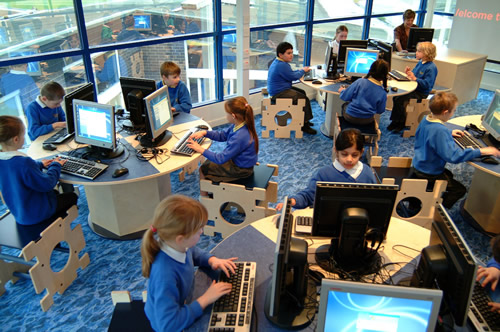Engaging children in education is one of the biggest challenges that schoolteachers up and down the country face every day.
From the ages of 4-16, children go through a seismic physical and mental shift, all at different paces. Reaching the children and their desire to learn and better themselves is a task that has no concrete, infallible technique, meaning that the education system has to be entirely fluid at all times.
School boards, teachers and building planners need to use every tool available to them at all times to ensure that they can inspire children to achieve the best results possible. Over the past 20 years, this has led to an increased amount of interaction with technology due to the extended availability and young children’s improved comfort with the mediums. This is reflected in the changing face of schools and classrooms due to the increased need to efficiently implement these technologies with no disruption.
More and more, schools understand that the children’s surroundings and environment are central to their intake of knowledge. Designing and building environments wherein children feel comfortable, allows for fewer distractions and greater, prolonged periods of active learning.
Innova Design Solutions have researched this subject matter extensively to determine exactly what environmental factors help promote a healthy working environment. Measuring ‘classic’ classroom designs against bespoke set-ups, Innova have managed to determine the increase in learning enjoyed by pupils studying in the latter and the factors that directly benefit intelligent design.
The research revealed that students learning in an environment engineered towards progressive learning can enjoy performances improved by 25% due to numerous factors.
Intelligent use of furniture, layout, colour, temperature, acoustics and temperature can lead to increased concentration, learning support, inspiration, improved behaviour culminating in better test results and grades.
Best exemplified by the Sydney Opera House, a building’s design can produce vastly improved acoustics. Immediately, this is obviously beneficial during classroom subjects such as music where learning by hearing is completely necessary. Furthermore, improved acoustics across all classrooms will help support the teacher’s diction and improve the clarity of learning.
Ergonomic furniture allows children to sit comfortably for prolonged periods, which can lead to a reduction in fidgeting and helps to encourage a healthy posture. This reduction in fidgeting promotes an increased attention span and reduces the level of distraction imposed upon classmates.
Innova Design Solutions research determined that flexible layouts helped inform different behaviours and allowed children to participate comfortably in a wider range of tasks. The flexible layout promotes both individual learning and group study in an efficient and unobtrusive manner.
In 2011, Michael Gove announced Government plans to build 300 new schools with the first of these opening later this year. Coupled with the party’s intention of increasing the number of academies and free schools available to create a more diverse school system, now is the perfect time for contractors and school boards to implement intelligent classroom design to ensure that children are getting the best education and opportunities available to them.
